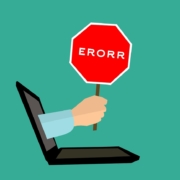3 Email Marketing Mistakes You Should Make!
It can be quite easy to fall into the trap of looking for best practices and, in the process, try to identify and avoid typical mistakes. However, at times, looking a little bit closer at those potential mistakes can be a good way to find hidden opportunities others might avoid, or at the very least, learn lessons without paying too much of a price.
The key, however, is to try to make these mistakes with curiosity and with a good reason. The aim is to learn how to communicate better with your target market, and potentially, identify new opportunities that might seem unthinkable if you were thinking strictly rational. We will present three of these hypothesis as potential experiments that you can do with your email marketing list.
Table of Contents
“You get a higher response rate if you address your email list by name”
The common argument for this is that people are more likely to open an email and read it if you start the email with words like “Hi Sarah” or “Hi John”. The psychology behind this states that you are more likely to read and engage with content that appears to be addressed directly to you. However, is it ethical? And how does the list react long-term to this?
It might be worthwhile to try to set up an experiment where half of your list is addressed personally and the other is not. Just make sure that every other element of the email is identical. Then, try to break the rules by writing an email that is entirely different from the personal one. Make it clear that it is a group email but is still targeted to the email recipient. Then reflect on the results. Is it as obvious as many gurus claim it to be?
“You get a higher response rate if you send a simple email!”
Many internet marketers believe that simple emails that look like they could have been written by a friend work better than full-on HTML emails that look the marketing part. A large part of this argument is based on the same premise as the previous point—you want to get past the barriers and to potential customers before they shut you down.
The argument against this might simply be the fact that internet traffic is moving a lot faster than it was ten or twenty years ago. Almost everyone is using broadband, and therefore, the possibilities and the expectations are higher. However, not everyone is equally savvy. So the question you might need to ask yourself is whether your readership is hip or lagging a little bit behind.

“You should only write your email list once a month to keep your list happy”
How often a list should be contacted is a very hot topic. The core of the argument is the fight between how often marketers want to make money, and how often customers want to be contacted. How do you solve that problem? For many companies, it is simply solved with a monthly newsletter. Then most of the effort is put into making the newsletter as informative as possible. The argument is that contacting your customers more often could be perceived as spam. Some testing indicated that this might be true.
However, is it necessarily true for you? The exact information demand that an audience feels depends on the type of content you are providing and the reasons behind your potential customers signing up to your list. For instance, if you are providing advice in areas that are highly personal and urgent, providing a lot of timely, fast information might be appreciated. Your challenge here is to first ask your audience how often they want to be contacted, and then test if they respond better when you try to follow their advice (Notice, the final judge is always testing).
Conclusion
The above three hypotheses are just the beginning if you really want to innovate your business. The core is to question why something has to be done a certain way, then test if it is really so. You might find that the original way was better. If so, you have tested the theory and know it is accurate. If you find a different way is more valuable and few, if any, of your competitors have discovered the same, you might have yourself an exclusive opportunity.
About the author: Bjarne Viken

Bjarne is a conversion optimisation strategist, who works with marketing managers and business owners to scale up their businesses by analysing how they can improve their online conversion rates.
He has worked extensively with many growing companies, helping them drive customer acquisition, push conversions and increase sales.”
You can find other articles to reuse on scaleup.com.au/blog. Please link back to the blog or just ScaleUp.com.au.



